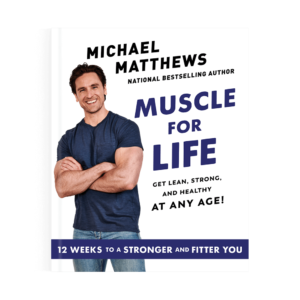“But what if it’s too late?” many middle-aged people have asked me before starting their fitness journey.
Most of them had tried many diet and exercise programs already, and the results looked grim. Everything they ate seemed to stick to their stomach, hips, and thighs. Their body didn’t respond to exercise the way it once did. Their metabolism felt sluggish, their hormones screwy.
And so they were reluctant to follow my advice. They didn’t want to fail again, or worse, get hurt, and feel weak, confused, and vulnerable. They didn’t want to waste their time chasing a mirage.
If you’re nodding your head, you’re not entirely mistaken. The human body does change in undesirable ways as it gets older—ways that do indeed conspire against your health and fitness. That doesn’t mean it’s too late to get fit, however; it’s only too late to get fit the way you used to.
When you were younger, you may have eaten what you wanted, lived how you wanted, and enjoyed the body you wanted. This formula probably consisted of eating out regularly, going for occasional runs or bike rides, and flaunting lean, defined muscles—a recipe that no longer works and never will again.
Think of it this way: The springtime of your life was like the star in Super Mario that makes you temporarily invincible. Eventually, however, the aura quietly disappears, and all of a sudden, the game has changed in ways you don’t understand. Mysteriously, your body is no longer responding to your usual tricks.
If you can learn what changes and what to do about it, though, you can reclaim youthful fitness and vitality. While I can’t promise you can feel just like you’re twenty again, no matter how much you’ve neglected your wellness in the past, you can eliminate much or even all the fitness “debt” you’ve accrued easier—and faster—than you think.
For many people, it only takes months, not years. And if you’re still in the flower of your youth but don’t quite look or feel that way, this is your chance to bloom.
This isn’t just my opinion. More and more scientific research is showing that while “aging” isn’t optional, genetics affect lifespan and longevity far less than most people believe. Simply put: what appears to most influence how we age isn’t time, but lifestyle.
We get heavier and weaker not because of the sands of time, but because we stop exercising and overeat too often; our joints fall into disrepair because we weigh too much and move too little; and we develop disease and dysfunction because we allow our bodies to stagnate and sour.
So, while we can’t change our chronological age, studies show that we can reverse our biological age and restore much of the vigor of our younger years. In fact, more or less every negative aspect of aging can be mitigated by proper exercise (especially strength training), diet, sleep, and supplementation.
Want to see for yourself?
Then check out my newest book Muscle for Life, which is a science-based blueprint for eating and exercising that anyone can follow at any age and fitness level.

More specifically, I wrote this book for people who . . .
- Are in their 40s or 50s or older and new or relatively new to strength training, or;
- Have a lot of weight to lose (25% of body weight or more) and are new or relatively new to strength training, or;
- Want to start doing strength training but don’t feel ready for heavy barbell training, or;
- Are fit and want to brush up on the fundamentals and find simple ways to improve their diet and training regimens.
If you’re in one of those buckets, Muscle for Life will show you how to look, feel, and perform your best. And frankly, it may be the last fitness book you ever need to read.
Go here to pre-order your copy now:
Go for it!










